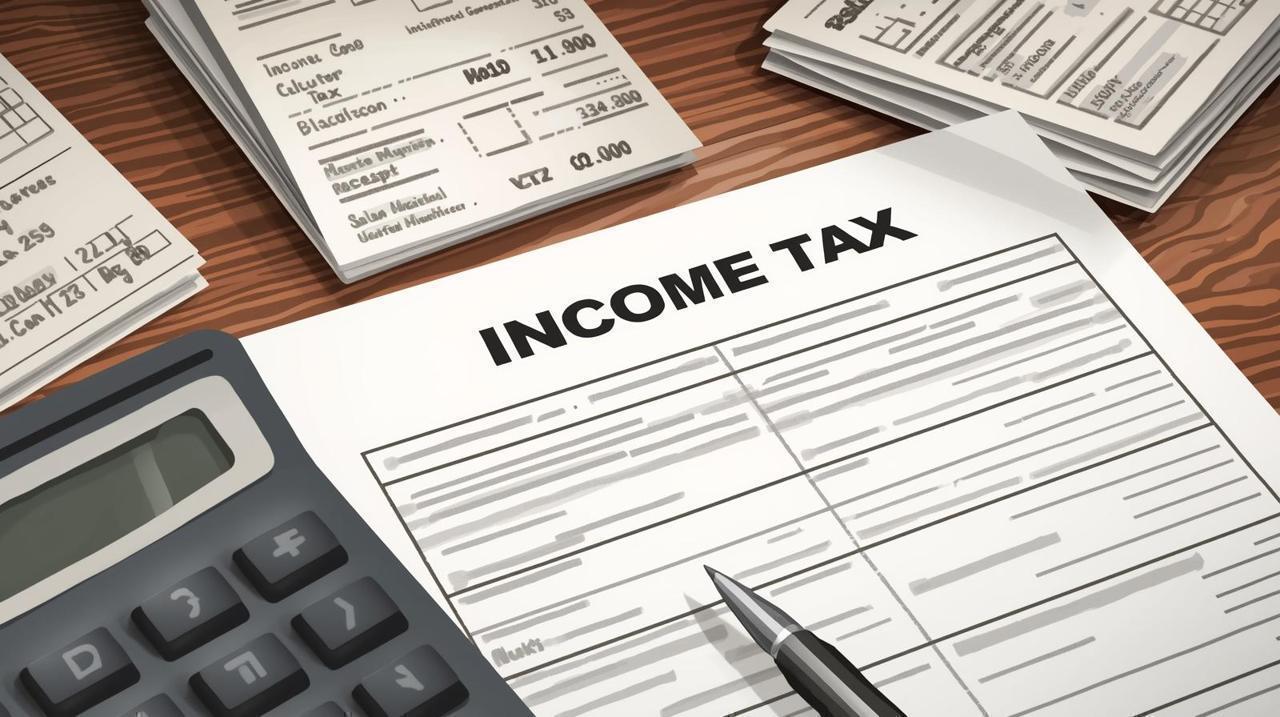
Post by : Sami Al-Rahmani
In the modern economic landscape, side hustles have transitioned from a mere trend into a necessity. Freelancers, content creators, ride-share drivers, e-commerce entrepreneurs, and consultants are all exploring innovative avenues to supplement their main sources of income.
As your side hustle income increases, so do your tax obligations. Many individuals venturing into entrepreneurship find themselves unprepared when tax time arrives, grappling with what to declare, how to file, and the deductions available to them.
This comprehensive guide aims to clarify how taxes on side hustle income function, mistakes to avoid, and strategies to optimize your deductions. With this knowledge, you can retain more of your earnings this season.
Income earned outside of your primary employment—be it through online freelancing, selling handmade goods, or driving for services like Uber—is categorized as self-employment income by tax authorities.
Unlike traditional employment, where taxes are withheld, you bear the responsibility of reporting and paying both income tax and, in some cases, self-employment tax on your earnings.
Every penny earned from your side hustle counts as part of your overall income. Depending on your country's tax regulations (for instance, in the U.S., India, or among UAE expatriates with global income), this could place you into a higher tax bracket.
Consistent earnings from your side hustle classify it as a business activity rather than a hobby, necessitating accurate reporting.
In various countries, self-employed individuals must shoulder both the employer and employee contributions to Social Security and Medicare taxes—collectively known as the self-employment tax (approximately 15.3% in the U.S.).
While this may appear burdensome, many business-related expenses can be deducted, ultimately reducing your taxable income.
Before outlining deductions, let's address critical missteps that could lead to financial losses or, worse yet, a tax audit.
Neglecting Record Keeping: Failing to accurately track your income and expenses may lead to filing errors and unnecessary stress.
Blending Personal and Business Finances: Rely on separate bank accounts for your side hustle to avoid any confusion.
Overlooking Estimated Tax Payments: Anticipate owing more than a specific threshold? Initiate quarterly tax payments so you're not caught unprepared.
Incorrectly Claiming Deductions: Over-reporting business expenditures can result in penalties if your finances are audited.
Failing to Report Small or Cash Earnings: Even cash or payments received via PayPal are taxable income.
By recognizing and avoiding these pitfalls, you can not only ensure compliance but also confidently maximize legitimate deductions.
The easiest way to retain more of your side hustle income is to take advantage of every applicable tax deduction. These legitimate expenses can reduce your overall taxable income.
Here are common deductions often overlooked:
Working from home? Deduct related expenses—such as rent, internet, utilities, and maintenance—that are proportional to your workspace size.
Ensure that your office is used solely for work to qualify.
If your phone or internet is shared for personal and business use, you can claim a percentage associated with your side hustle.
Purchases like laptops, printers, cameras, or software used for your work are tax-deductible. Retain receipts for all items, even smaller ones such as pens and cables.
If your side hustle involves client visits, deliveries, or driving for income, deduct expenses such as mileage, fuel, maintenance, and parking fees. Keep a logbook or use tracking apps to stay organized.
Costs related to promoting your business—like social media ads, business cards, or website hosting—are fully deductible.
Courses, webinars, or certifications enhancing your skills relevant to your side hustle can be claimed as tax deductions.
If you enlisted help from an accountant, tax consultant, or legal expert, their fees can be deducted as business expenses.
Recurring costs for tools like QuickBooks, Zoom, or Canva that are necessary for your business are also deductible.
Effective record-keeping is pivotal to successful tax management for side hustlers. Utilize an app, spreadsheet, or accounting software to consistently track your income and expenses.
Make use of the following methods for organized record-keeping:
Employ tools like QuickBooks or Wave for efficient expense tracking.
Store digital copies of all receipts, as physical ones can fade.
Utilize a dedicated bank account and credit card for business transactions.
Set weekly reminders to update your financial records instead of waiting until taxes are due.
Adequate record keeping not only simplifies tax filing but also bolsters your title as a legitimate business entity as your side hustle evolves.
If your side hustle generates stable income and involves regular clients, consider registering it as a business. Potential advantages include:
Tax Benefits: Businesses can often access numerous tax deductions and credits.
Credibility: Clients favor working with registered businesses.
Legal Protection: Registration helps differentiate personal from business liabilities.
Bear in mind, however, that registration also entails duties such as maintaining accurate accounts and filing business tax returns, so ensure you’re prepared for the transition.
If side hustle income is substantial, you might need to remit estimated taxes quarterly. This helps avoid underpayment penalties by distributing your tax liability throughout the year.
A common practice is to allocate 25% of your projected annual tax liability each quarter (April, June, September, January). Consult a tax professional for accurate calculations on your estimated payments.
Many side hustlers implement the 30% rule, reserving 30% of every payment received for taxes.
This creates a financial buffer, ensuring funds are available as tax deadlines approach. Consider placing this amount in a high-interest savings account to accumulate interest while it sits.
Employ these strategies to minimize your tax responsibilities and maximize your income:
Strategic Purchases: Acquire necessary business equipment prior to the fiscal year's conclusion for quicker deductions.
Hire Professionals: A tax expert can unearth potential deductions and facilitate income structuring.
Retirement Contributions: In various countries, contributing to retirement plans like PPF, IRA, or EPF can offer tax benefits.
Separate Finances: Keeping your business and personal finances distinct simplifies tax-time efforts and reduces audit risks.
When it’s time to file taxes, ensure you report both your principal income and side hustle earnings. According to jurisdiction, you may need to:
Complete a distinct schedule or form for self-employment income (e.g., Schedule C in the U.S.).
Deduct all applicable business expenses before determining taxable income.
Include digital payments, cash earnings, and foreign income, when relevant.
If unsure, hiring a certified tax preparer can be a time saver and help avoid potential mistakes.
Understanding your tax obligations not only helps maintain compliance; it also fosters financial freedom. When you master the art of optimizing earnings, tracking expenses, and planning taxes, your side hustle evolves from a side gig to a sustainable revenue source.
Effective tax management allows you to:
Elevate your side hustle into a legitimate enterprise
Enhance your loan eligibility and credit scores
Reinvest earnings into your business for growth
Relieve tax-related stress during filing periods
Your side hustle signifies independence, creativity, and command over your financial future. Yet, without adequate tax planning, it can morph into a source of anxiety and lost revenue.
The essential principle is to stay organized, utilize all eligible deductions, and set aside tax funds regularly. Whether your venture involves freelance writing, photography, online education, or e-commerce, the principles remain universal: plan, document, and seek expert guidance when necessary.
Stay informed about your tax duties, and you'll be empowered to retain and grow your earnings this year.










Shreyas Iyer in ICU in Sydney After Rib Injury During Third ODI
India ODI vice-captain Shreyas Iyer is in a Sydney ICU with internal bleeding from a rib injury sust

NBA Friday Highlights: Miami, Lakers, Milwaukee, and Clippers Triumph
Miami, Lakers, Bucks, and Clippers secure victories in thrilling NBA Friday games with standout perf

Doncic Dominates with 49 Points as Lakers Defeat Timberwolves 128-110
Luka Doncic scores 49 points to propel the Lakers past the Timberwolves 128-110; Reaves and Hachimur

Kings Narrowly Defeat Jazz 105-104 with Sabonis' Late Heroics
Domantas Sabonis' last-minute shot secures a thrilling 105-104 win for the Kings against the Jazz in

Argentina's Friendly Match with India Delayed, New Date to be Announced
Argentina's friendly against India in Kochi is postponed; a new date will be confirmed soon due to F

Rohit and Kohli Conclude ODI Journeys in Australia with a Win
Rohit Sharma and Virat Kohli close their ODI chapter in Australia with a win, partnering for an unbe